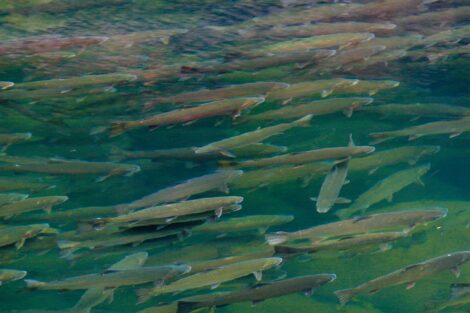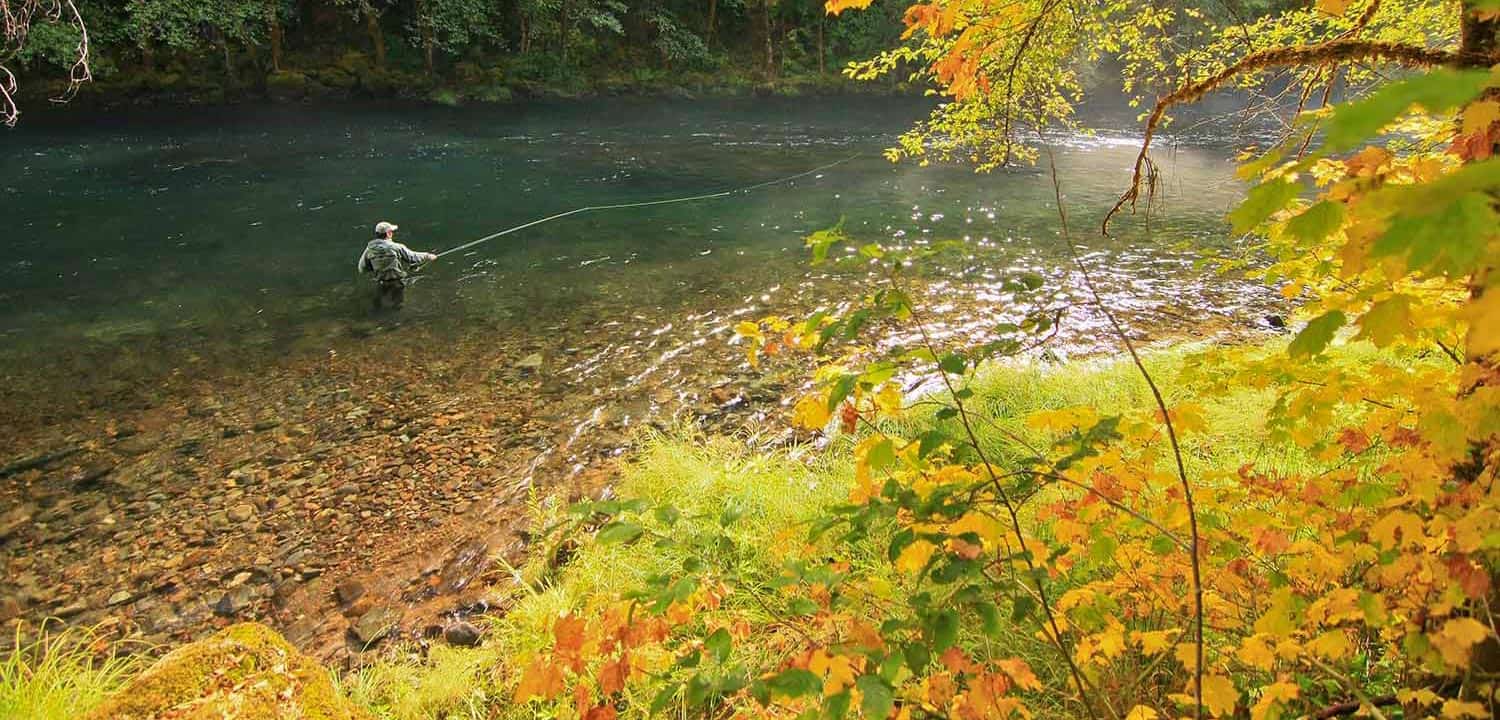Protecting Oregon’s North Umpqua, while honoring conservationists Frank and Jeanne Moore.
The Frank and Jeanne Moore Wild Steelhead Sanctuary on Oregon’s North Umpqua River would designate approximately 100,000 acres of public lands in some of the best remaining wild steelhead spawning areas in the Pacific Northwest. It pairs a legendary river – treasured by Oregonians and frequented by thousands of foreign visitors yearly – with two inspirational conservationists and American heroes.
We join supportive neighbors, outdoor enthusiasts, and recreational businesses in working to forever protect this special place while at the same time honoring the Moores.
See OPB’s feature on Steamboat Creek and the Moore sanctuary:

Frank and Jeanne Moore
Frank and Jeanne Moore bind the people of the North Umpqua to its natural bounty. As stewards of the North Umpqua, Frank and Jeanne embody the resilience and grace of the landscape itself. But, like the steep, rugged terrain or the fighting steelhead making their way upstream, they are tough as nails.
In World War II, Frank Moore stormed the beaches of Normandy along with 150,000 troops during the D-Day Allied invasion and was awarded the Chevalier of the French Legion of Honor for his bravery. He returned home after the war, started a family, and pursued his passion of fishing on the winding rivers in Oregon.
For 20 years, Frank and Jeanne ran the legendary Steamboat Inn on the banks of the North Umpqua. Frank served on the State of Oregon Fish and Wildlife Commission from 1971 to 1974. He has been recognized for his conservation work with the National Wildlife Federation Conservationist of the Year award, the Wild Steelhead Coalition Conservation Award; and his 2010 induction into the Fresh Water Fishing Hall of Fame.
Jeanne Moore is a self-taught botanical expert who has spent her life identifying the myriad native plant species in the Steamboat Creek watershed. There is strong local support to honor her as well as Frank in this designation.
Their life together is documented in the film Mending the Line, and Frank was the subject of an OPB Field Guide special.
The wild steelhead sanctuary

The sanctuary proposal protects high conservation value lands and waters in the Steamboat Creek watershed. The watershed provides over 50 river and stream miles of high quality habitat for summer and winter steelhead, Coho salmon, rainbow trout and other native species (see map). It serves as one of the few remaining cold water refuges for summer steelhead, which migrate from the main North Umpqua River to the cooler waters of Steamboat and Canton creeks in the summer months and hold in specific pools until the fall rains arrive. The Big Bend Pool of Steamboat Creek is one of the few places in the world where people can easily view hundreds of summer steelhead that use the pool as a refuge from warmer stream temperatures.
Together, the transitional moist and dry forest zones around the creek boast several endemic and rare species. The area also is highly valued for its Native American heritage sites and rugged recreational hiking and backcountry offerings.
The unique and irreplaceable nature of Steamboat Creek and the North Umpqua was recognized early on, popularized by American novelist and angler Zane Grey (1872-1939). In the late 1930’s, Grey lent his support to the Roseburg Rod and Gun Club by appearing before the Oregon State Game Commission in support of the club’s successful proposal to curtail over-harvesting of salmon and steelhead by closing Steamboat Creek to angling. As early as 1959, the importance of the extraordinary wild fish habitat was recognized by the U.S. Forest Service and the Oregon Department of Fish and Wildlife as mining and fishing restrictions were set in place on Steamboat Creek. Later, in 1976, mineral withdrawal was extended to portions of 15 tributaries to Steamboat Creek.
Today, the extraordinary fish habitat, late-successional and old growth forests, rich botanical array and boundless recreational opportunities draw outdoor enthusiasts from all over the world. Yet, despite global recognition, the area only enjoys administrative protections and lacks the stability and profile of a designated national treasure.
